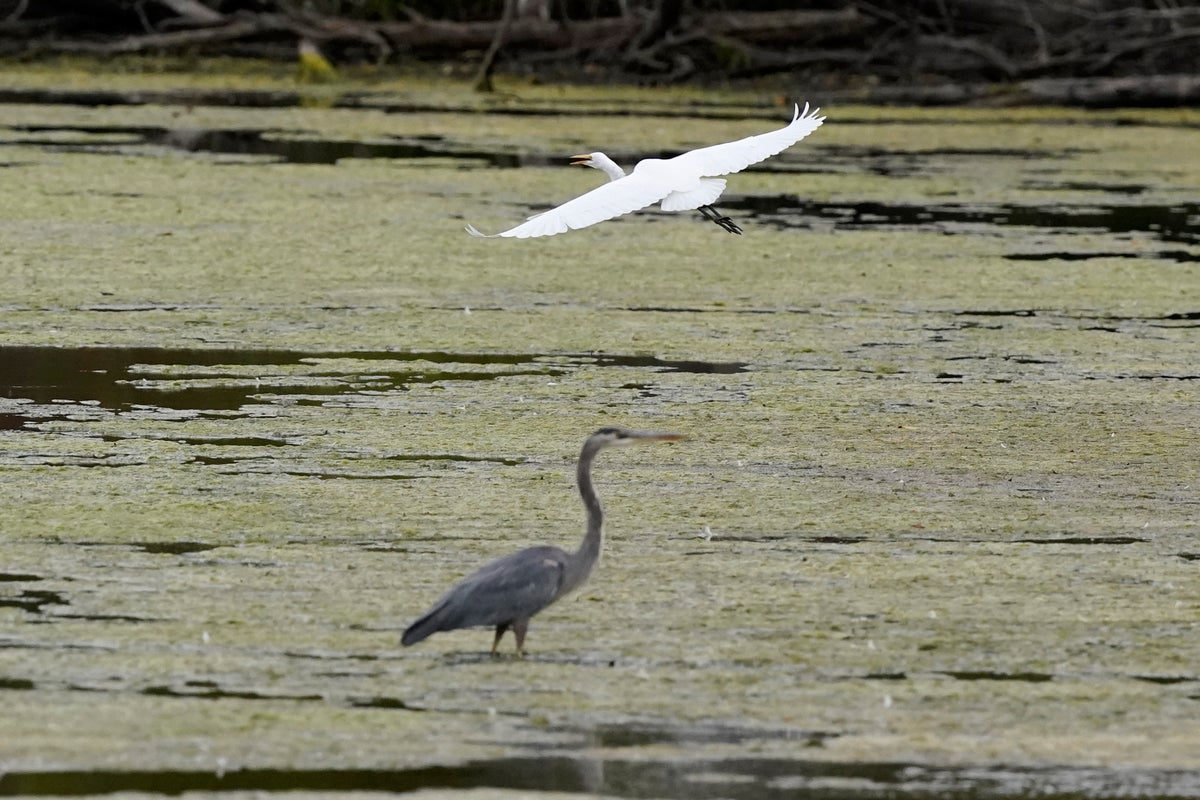
President Joe Biden’s administration on Friday finalized regulations that protect hundreds of thousands of small streams, wetlands and other waterways, repealing a Trump-era rule that federal courts had thrown out and that environmentalists said left waterways vulnerable to pollution.
The rule defines which “waters of the United States” are protected by the Clean Water Act. For decades, the term has been a flashpoint between environmental groups that want to broaden limits on pollution entering the nation's waters and farmers, builders and industry groups that say extending regulations too far is onerous for business.
The Environmental Protection Agency and the Department of the Army said the reworked rule is based on definitions that were in place prior to 2015. Federal officials said they wrote a “durable definition” of waterways to reduce uncertainty.
In recent years, however, there has been a lot of uncertainty. After the Obama administration sought to expand federal protections, the Trump administration rolled them back as part of its unwinding of hundreds of environmental and public health regulations. A federal judge rejected that effort. And a separate case is currently being considered by the Supreme Court that could yet upend the finalized rule.
And a separate case is currently being considered by the Supreme Court that could upend the status quo.
"We have put forward a rule that’s clear, it’s durable, and it balances that protecting of our water resources with the needs of all water users, whether it’s farmers, ranchers, industry, watershed organizations,” EPA Assistant Administrator for Water Radhika Fox told The Associated Press.
The new rule is built on a pre-2015 definition, but is more streamlined and includes updates to reflect court opinions, scientific understanding and decades of experience, Fox said. The final rule will modestly increase protections for some streams, wetlands, lakes and ponds, she said.
The Trump-era rule, finalized in 2020, was long sought by builders, oil and gas developers, farmers and others who complained about federal overreach that they said stretched into gullies, creeks and ravines on farmland and other private property.
Environmental groups and public health advocates countered that the Trump rule allowed businesses to dump pollutants into unprotected waterways and fill in some wetlands, threatening public water supplies downstream and harming wildlife and habitat.
A 2021 review by the Biden administration found that the Trump rule allowed more than 300 projects to proceed without the federal permits required under the Obama-era rule, and that the Trump rule significantly curtailed clean water protections in states such as New Mexico and Arizona.
In August 2021, a federal judge threw out the Trump-era rule and put back in place a 1986 standard that was broader in scope than the Trump rule but narrower than Obama’s. U.S. District Court Judge Rosemary Marquez in Arizona, an Obama appointee, said the Trump-era EPA had ignored its own findings that small waterways can affect the well-being of the larger waterways they flow into.
The EPA has now formally rejected the narrow protections the Trump administration embraced and that were thrown out in court. That final rule is a “much needed course correction," according to Kelly Moser, an attorney with the Southern Environmental Law Center.
“Now we have the administration saying ‘we agree, this rule is inconsistent with the objective of the Clean Water Act’” to protect the nation's waterways, Moser said.
Meanwhile, Supreme Court justices are considering arguments from an Idaho couple in their business-backed push to curtail the Clean Water Act. Chantell and Michael Sackett wanted to build a home near a lake, but the EPA stopped their work in 2007, finding wetlands on their property were federally regulated. The agency said the Sacketts needed a permit.
The case was heard in October and tests part of the rule the Biden administration carried over into its finalized version. Now-retired Justice Anthony Kennedy wrote in 2006 that if wetlands “significantly affect the chemical, physical, and biological integrity” of nearby navigable waters like rivers, the Clean Water Act's protections apply. The EPA's rule includes this test. Four conservative justices in the 2006 case, however, said that federal regulation only applied if there was a continuous surface connection between wetlands and an obviously regulated body of water like a river.
The Biden rule applies federal protections to wetlands, tributaries and other waters that have a significant connection to navigable waters or if wetlands are “relatively permanent.”
The agencies said input was received at 10 regional roundtables that sought information on what was working well, and what wasn’t.
Fox said the rule wasn't written to stop development or prevent farming.
“It is about making sure we have development happening, that we’re growing food and fuel for our country but doing it in a way that also protects our nation’s water," she said.
_____
The Associated Press receives support from the Walton Family Foundation for coverage of water and environmental policy. The AP is solely responsible for all content. For all of AP’s environmental coverage, visit https://apnews.com/hub/climate-and-environment







